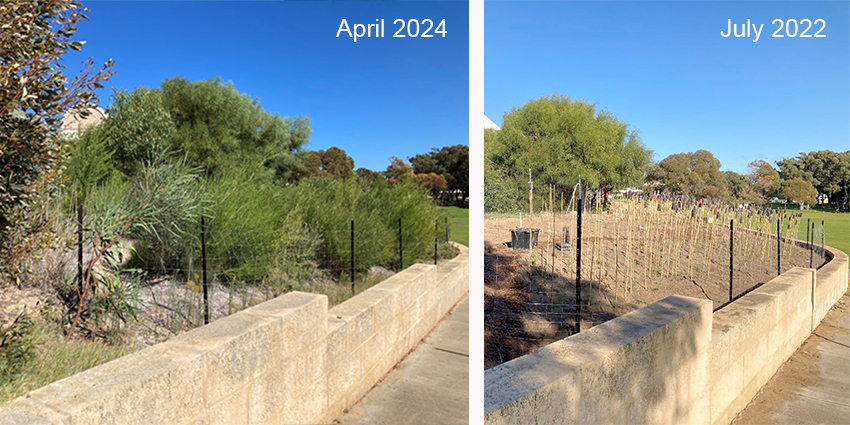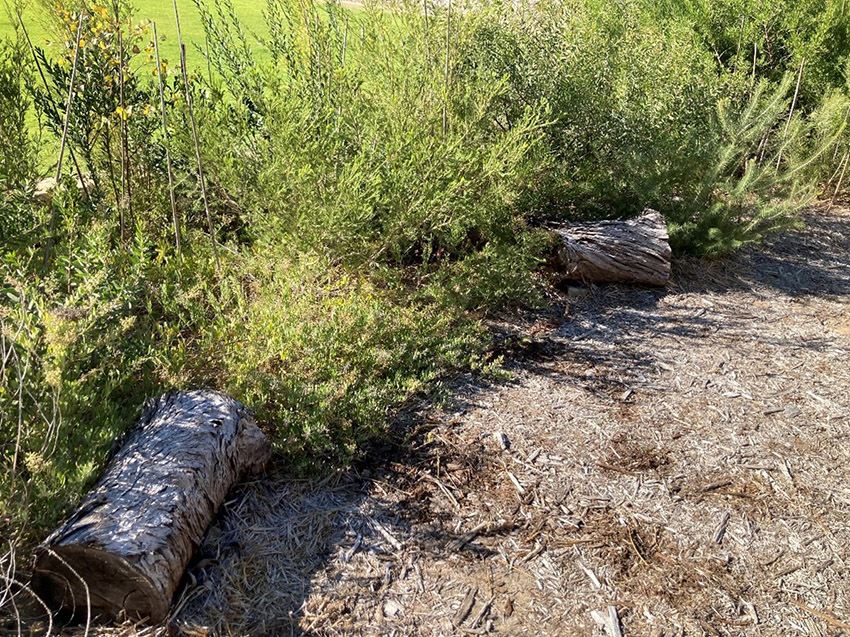This case study was delivered through Kep Katitjin – Gabi Kaadadjan Waterwise Perth action plan 2 delivered by the Department of Education, Water Corporation and the Department of Water and Environmental Regulation.
Bush Classrooms is at the start of its waterwise journey. It is a Department of Education initiative that supports schools to regenerate areas of their grounds using native plants that naturally occur in the local area. This is a leading example of the waterwise principle of designing with a sense of place.
By 2030, increased areas in school grounds will be providing additional educational and social value, having transformed to have greater biodiversity and cultural value and lower water use.
The initiative is encouraging schools to create culturally responsive, outdoor learning areas that privilege the first cultures of this country and celebrate Aboriginal ways of knowing, being and doing. Bush Classrooms provides opportunities to deliver components of the Western Australian Curriculum while supporting student and community engagement and wellbeing. The teaching and learning process that underpins this initiative is aligned to the Department of Education’s Teaching for Impact strategic direction, which outlines what effective teachers believe, know and do to have high impact on student outcomes.
There is a broad range of benefits in engaging in this transformative teaching and learning process. These benefits include climate change mitigation through bio-sequestration (the process where carbon dioxide, the main driver of climate change, is removed from the atmosphere by plants and micro-organisms) and reduced water use on school sites. Regenerated areas are usually ones that were previously under grass or non-native plants and required significant watering. Although native plant tube-stock are well watered in the first year or so, reticulation and hand watering are gradually removed as plants establish themselves, and the area transitions to a water-efficient natural ecosystem.
Bush Classrooms vary in plant species, soil profile, size and positioning based on the needs and context of the school. For some schools, there is limited space available to create a bush classroom, so they are making use of smaller areas, for example Aveley North Primary School uses six raised beds incorporating local plants that reflect the Noongar seasons. Other schools have more available space, and an increasing number, including Makybe Rise Primary School and Baldivis Secondary College, have engaged with Murdoch University’s Miyawaki Forest Outreach Program (Miyawaki Program) to create larger bush classroom areas.
The Bush Classrooms initiative is informed by the Miyawaki Forest methodology. Working with the Miyawaki Program ensures alignment with the Western Australian Curriculum and the Department of Education’s Sustainability framework – Caring for Country together. There is a Bush Classroom Miyawaki Forest demonstration site at the Department of Education’s Statewide Services Centre, which supports Bush Classrooms professional learning for school staff.




